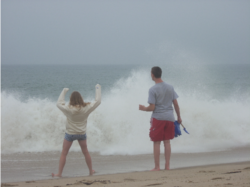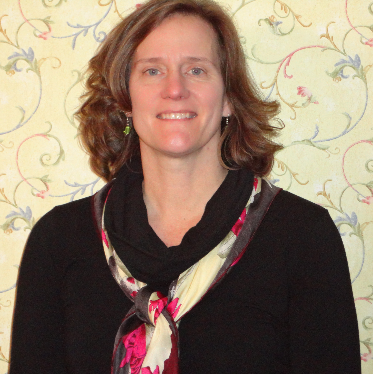 Throughout his life, Pat has experienced many transitions. It started with his transition out of the early intervention program into preschool, then onto elementary school and into his collaborative program. After that, he transitioned to a special school program and onto an adult day program. When Pat is involved in a transition it is almost always planned. When it comes to introducing Pat into a new setting or meeting new people, we usually try to ease him into it by allowing time for “trial days” in new programs.
Throughout his life, Pat has experienced many transitions. It started with his transition out of the early intervention program into preschool, then onto elementary school and into his collaborative program. After that, he transitioned to a special school program and onto an adult day program. When Pat is involved in a transition it is almost always planned. When it comes to introducing Pat into a new setting or meeting new people, we usually try to ease him into it by allowing time for “trial days” in new programs.
In High School
During his high school years, Pat was in a collaborative program, which consisted of a separate classroom that housed students with different disabilities. What made the program collaborative was that the administrators “rented” the room in a public school setting with the hope of integrating some “special” students in with typical students.
At times, Pat can be very loud. Being non-verbal, his outbursts are usually due to the frustration he experiences when trying get his needs or points across to staff. Pat had a loud moment in the high school hallway and the vice principle sent him home “because he was disruptive to other students.” So Pat was sent home and asked to stay home until his team met to develop a behavior plan for him. This same incident happened again a month later. Our family was very disappointed in the program and the staff for their actions related to the public school administration.
Finding a Program
 In the end, we took Pat out of the program and searched, with help from his transition coordinator (he is assigned one from the state at about age 17 till 22), for two weeks to find a program that would work. Once we found one, we had to quickly educate the staff on who/where/how to communicate with Pat (remember he is non verbal). I remember being on edge the first few days he attended the program. I waited every day for the phone to ring, hoping he was doing okay.
In the end, we took Pat out of the program and searched, with help from his transition coordinator (he is assigned one from the state at about age 17 till 22), for two weeks to find a program that would work. Once we found one, we had to quickly educate the staff on who/where/how to communicate with Pat (remember he is non verbal). I remember being on edge the first few days he attended the program. I waited every day for the phone to ring, hoping he was doing okay.
As many of our kids do, he totally surprised us with a pretty smooth transition! It was not perfect but he adapted. Pat overcame his bad habits from the old program, mainly because the new staff would not tolerate them.
I believe Pat inspires our family by what he can do. I look back at all his IEP’s – they are full of negatives, “Pat can’t, he won’t, he will only complete 40 percent of the time, blah, blah…”
I think when you have a child or an adult with Fragile X, you must celebrate everything! Not only the “extraordinary” events but the “normal” achievements too. Pat inspires our family with his “much improved” adaptation to change. His love of laughing and being funny brightens our days. Pat is very smart and observant. I always explain to his staff, “Tell him what’s happening. He understands you (so don’t talk about him in front of him) and keep on trying new things, he may surprise you!”
Author
 Denise Devine
Denise Devine
is a CSN leader (with lots of help from husband Gerry) of the since 1996, member of public policy committee; mentor program chair, Advocacy Day attendee since ‘07, Mom of Patrick (22) full mutation non verbal and Kelley (20) full mutation. Honored to be selected in 2014 to represent NE at the ACMG (American College of Medical Genetics and Genomics) yearly conference and worked with NE genetics group (NEGC) on a project related to Fragile X. Selected to be on Consumer Task Force for the Genetics Alliance working on a local project to promote awareness about new born screening, www.babysfirsttest.org had her bio and blog.

